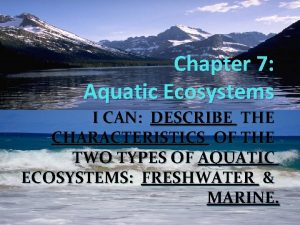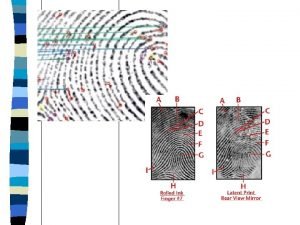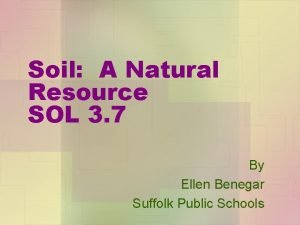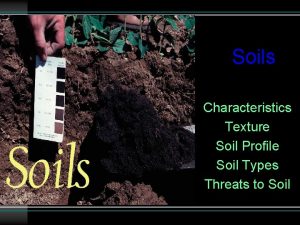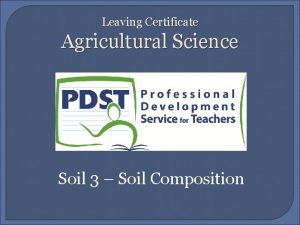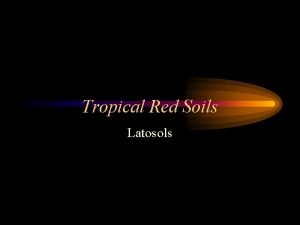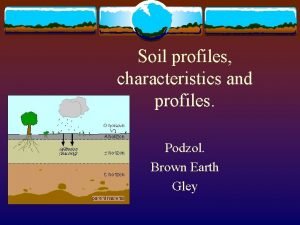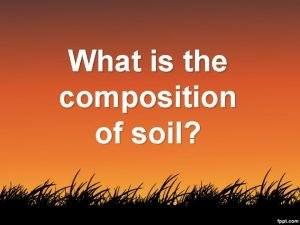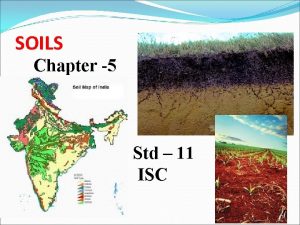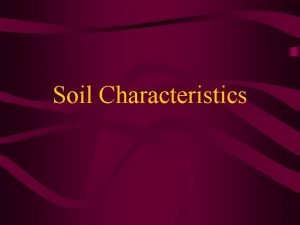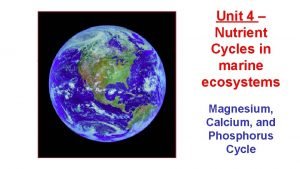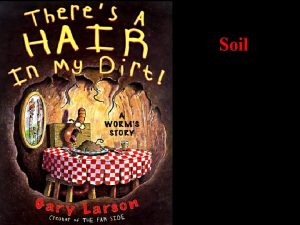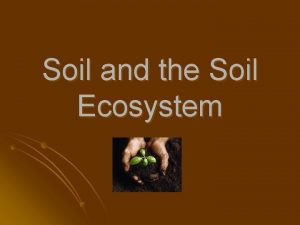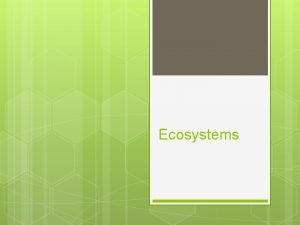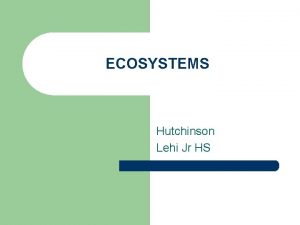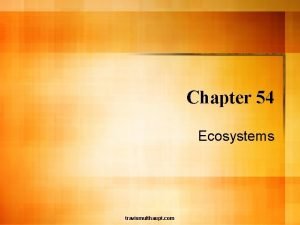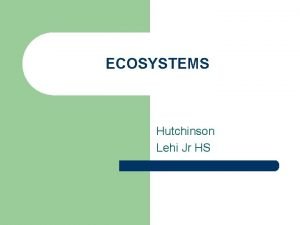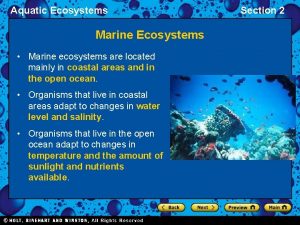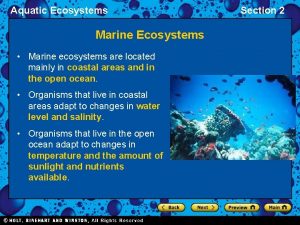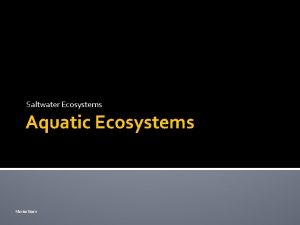Unit Three Ecosystems Types of Soil Soil Characteristics
















- Slides: 16

Unit Three: Ecosystems Types of Soil

Soil Characteristics • There are several characteristics of soil that affect its value for farming and growing vegetation. • Organic Content: a soil's fertility is determined as a ratio of the organic content to the content of ground bed rock. • Mineral content: varies with precipitation because heavy rains tend to leech soils removing minerals from the root region of soil. • Soil Texture: this will be discussed in the next lesson but refers to the mixture of fine particles (sand), very fine particles (silt) and extra fine particles (clay). The best texture for agriculture is an even mixture of each.

Soil Profile • To understand about different soils you must understand that there are fairly distinct layers within soil. • Top Layer: Dark color & Rich in Humus • 2 nd Layer: Mineral layer deposited from above • 3 rd Layer: weathered bed rock • 4 th Layer: Bed Rock • As you can imagine thickness and quality of the top humus layer is very important for plant life.

Three Types of Soil • Podzol: soils which predominate the boreal forest and tend to be somewhat acidic • Chernozem: soils which tend to be the best for agriculture. They are found in grasslands which are semi-arid resulting in less leeching and a mineral rich soil. • Latosol: soils which are very infertile due to the high amount of leeching. They are found in tropical rain forests with high amounts of rain which result in leeched mineral-poor soil.

Environmental Factors Affecting Soil • Temperature: affects the development of humus. Too cold and the decay of organic matter is slowed considerably. • Precipitation: affects the mineral content of soil. Too much rain and minerals are leeched beyond the reach of plant roots. Too much rain also results in eluviation which moves small particles down through the soil.

EARTH’S SOIL RESOURCES • Soil is one of the most important natural resources • no plant life or food • soil profiles vary throughout the world • Processes within soil are leaching, eluviation and capillary action

• LEACHING - The movement of water down the soil profile. This results in the movement of constituents, including humus, to the lower soil horizons • ELUVIATION - The lateral or downward movement in suspension of clay or other fine particles • CAPILLARY ACTION - moisture rises up through the soil as a result of surface tension

SOIL TEXTURE • Key component to determine the value of soil is it’s texture • texture refers to the type of particles, the size of particles and their ability to bond together • these qualities will determine the ability of water to flow throughout the soil, the ability to hold water and the ability of air to move

PARTICLE SIZES • Stones/cobbles - less than 64 mm • gravel - 2 mm-64 mm • sand -. 05 -2 mm • silt -. 002 -. 05 • clay - smaller than. 002 mm

EXAMPLES OF SOILS • Sandy soils - 85% or more sand , with particles of silt and clay , good drainage but will not retain enough water for large scale plant growth. • Clay soils - more than 40% clay will retain water but not allow air to move throughout it freely

• The most desirable soils for farming are a combination of all three sand, clay and silt (LOAM) • there are two sub-divisions (clay based and sand based)

Threats to Soil • While the earth's surface is covered in soil the amount of fertile soil valuable for agriculture is limited and is dwindling yearly. Poor soil management can lead to loss of fertile soil. • Grasslands are semi-arid regions with extremely fertile soil. However, if proper soil management is not practiced these are among the most fragile places. Globally desertification of grasslands adjacent to deserts has been a problem.

Threats to Soil • Agricultural land on slopes/hills or mountains are very susceptible to water erosion. • Urban expansion has also been a factor in the loss of agricultural land. People have traditionally settled in rich farmland increasing urbanization is covering up good farmland. • Overgrazing, flooding and deforestation have also lead to the degradation of arable land.

Threats to Soil • Desertification refers to the process by which productive drylands in arid, semi-arid, or sub humid areas become degraded and unproductive. • Drylands cover one third of world’s land surfaces and inhabited by 1 billion people • Ecosystems in these areas have adapted and can recover from stresses, however, increased human activity can permanently upset the balance.

Threats to Soil • United Nations- 3. 5 billion hectares of world’s pasturelands, croplands and irrigated land may be in danger of desertification • This could threaten 1. 2 billion people world wide, contributing to such things as environmental refugees.

Threats to Soil • Agriculturalists try to help soil production by adding fertilizers, pesticides, and herbicides-these chemicals pollute and break down soil- increasing erosion • Pesticides kill the organisms that make the soil fertile (worms and insects) • Solutions • • • Organic Farming Techniques Crop Rotation Strip Cropping Cover Cropping Contour Ploughing Terracing
 Marine ecosystem webquest
Marine ecosystem webquest Living soil vs dead soil
Living soil vs dead soil Convergent plate boundaries
Convergent plate boundaries Ridges of fingerprint island
Ridges of fingerprint island Unit 6 review questions
Unit 6 review questions What is topsoil
What is topsoil Wettest canadian vegetation region
Wettest canadian vegetation region Soil profile diagram
Soil profile diagram Characteristics of sandy soil
Characteristics of sandy soil Latosol soil profile
Latosol soil profile Brown earth soil profile
Brown earth soil profile Layers and types of soil
Layers and types of soil Characteristics of red soil
Characteristics of red soil Soil
Soil Soil characteristic
Soil characteristic Water pollution impact on ecosystem
Water pollution impact on ecosystem Marine magnesium cycle
Marine magnesium cycle
